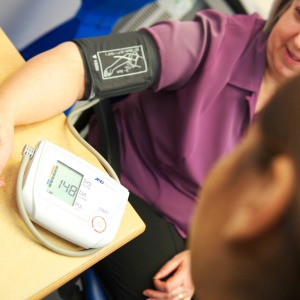GPs will be advised to use a ground-breaking lifetime risk calculator in conjunction with the 10-year risk assessment favoured by NICE in long-awaited cardiovascular guidelines set to be published by the Joint British Societies, Pulse has learnt.
The guidelines, which have been mooted for four years, were expected to reject the ten-year CV risk score favoured by NICE, after JBS3 said on its website that it would be recommending a lifetime risk algorithm based on the QRisk lifetime score.
However, JBS3 advisors insist that the lifetime risk approach will complement NICE’s recommendation that GPs initiate primary prevention – including offering statins – to people with a 10% or higher 10-year CV risk.
The guidelines – due to be published on 26 March – will recommend that the lifetime risk calculator should be used to capture people who fall below the 10% threshold but who might benefit from earlier interventions to modify risk factors such as weight, blood pressure and smoking as well as cholesterol.
The JBS3 working group has been preparing to introduce the radical new lifetime approach to CV risk assessment for the past four years and planned to align recommendations with NICE updated lipid modification guidelines.
NICE recently rejected the use of a lifetime score in its draft guidance published earlier this month, instead choosing to adhere to the traditional 10-year CV risk assessment, although it plans to lower the 10-year risk threshold for intervention from 20% to 10%.
Professor John Deanfield, director of the national centre for cardiovascular prevention and outcomes at University College London and chair of the JBS3 working group, told Pulse the new guidance would be ‘entirely compatible’ with the NICE draft guidance but would allow GPs to identify people at a younger age to maximise the benefit they can obtain from a range of primary prevention measures.
Professor Deanfield said this approach should help some of these people avoid taking statins in the long run, and may also guide older people to choose alternatives to statins if they have healthy cholesterol levels.
He explained: ‘The approach we’ve taken in JBS3 is to allow the GP to assess the 10-year risk but also to look at the impact of modifying risk factors at an earlier stage and by different approaches including through lifestyle changes.
‘What you get is a different conversation with people that is around broader risk reduction and sustaining lower levels of risk factors for a long time, giving them a tremendous benefit in the long run and maybe not needing to get into a statin conversation ever in their life.’
He added: ‘It doesn’t make sense to wait until 50 years to accumulate your disease and then try to reverse it by aggressive use of drugs – I’m not saying they’re not of value in later life, but the whole concept of storing up your disease over 50 or 60 years and then rushing to reverse it doesn’t seem the right way to approach an accumulative disease, which we know begins in teenage life.’
However, some critics have voiced concern that using a lifetime score could be confusing for GPs and lacks supportive evidence, while other have expressed concern it will mean a further step towards more widespread use of drugs.
Dr Rubin Minhas, a GPSI in cardiology in Kent who advised on previous NICE lipid modification guidance, said the JBS3 approach could be ‘misleading’ and questioned the evidence base.
Dr Minhas said: ‘I think using two different time horizons is misleading – especially when the decision to treat is triggered by the shorter one.
‘Some evidence for the effectiveness of this approach would be welcome for behaviour modification.’
He added: ‘Using lifetime risk of something that is so common in old age is restating what we already know and should reinforce public health and addressing lifestyle risks, but not drug treatment based on 10-years risks.’

















